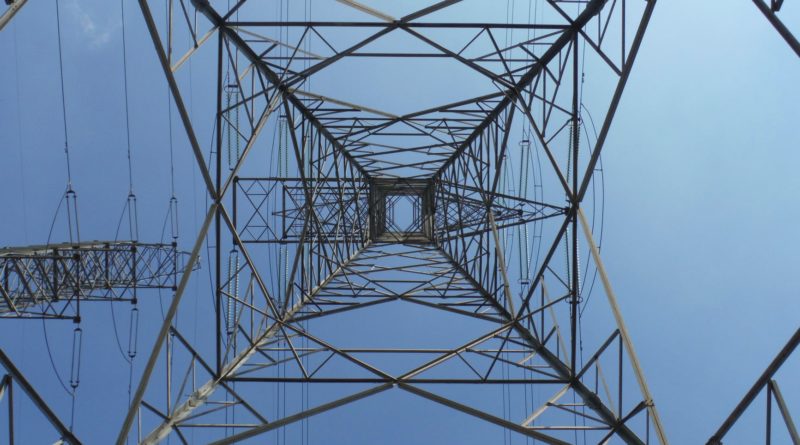What kinds of power quality problems are found
Common power quality problems are grouped into two broad areas: voltage anomalies and harmonic distortion issues. Voltage anomalies can cause several problems, many easily corrected. The key is to spot the symptoms.
Voltage dips or sags
Voltage dips or sags are responsible for up to 80 % of all power quality issues. A dip or sag occurs when the system voltage drops to 90 % or less of nominal system voltage for a half-cycle to one minute. Common symptoms of dips include incandescent lights dimming if the dip lasts more than three cycles, computer lockup, spurious shutdown of sensitive electronic equipment, data (memory) loss on programmable controls, and relay control problems.
Detecting sags can be challenging because it’s difficult to predict when they will occur. To troubleshoot potential dip problems, begin by monitoring at the load where the dip symptoms first occur. Generally, an upstream event will be indicated by a drop in both voltage and current. A downstream or load dip in voltage would be indicated by an increased in current and a drop in voltage. Compare the time of the equipment’s operational failure to the time at which the voltage dip occurred; if there is not a correlation, the problem is most likely not voltage dip. Continue troubleshooting by monitoring farther upstream until the source is located. Use the MIN/MAX function of a high-quality digital multimeter to detect single worst-case sags of 100 milliseconds or more while energising the load. For suspected recurring dips, use the “Dips and Swells” trending feature on a high-performance power quality analyser.
If there is a need to “document” power quality events for a longer duration, event recorders are available that can record dips, swells, interruptions, transients, and frequency deviations for several weeks.
Correct wiring and/or loading issues first. When the plant is in order, then pursue other sag-mitigating solutions, such as voltage regulators and constant voltage transformers.
Voltage swells or surges
Voltage swells or surges occur only about half as often as dips. However, increases in system voltage for short periods up to a cycle or more can cause problems. As with all power quality problems, monitor parameters for a period of time, then observe and interpret.
Symptoms of swells often include immediate failure of equipment, typically the power supply section of electronics. However, some equipment failures may not occur immediately, because voltage swells can occur over a period of time and prematurely break down components. If analysis of electronic equipment reveals faulty power supplies, monitor voltage trends on the feeders and branch circuits feeding this equipment. Where possible, compare failure rates of similar equipment operating on portions of systems known not to be experiencing swells.
When analysing power quality survey results, look for any sudden line-to-ground faults on a single-phase line. This type of fault causes the voltage to suddenly swell on the two non-faulted phases. Large plant loads suddenly dropping offline, and power factor correction capacitor switching, can also cause voltage swells.
Voltage transients
Voltage transients can cause symptoms ranging from computer lockups and damaged electronic equipment to flashover as well as damaged insulation on distribution equipment and motors.
Transients, sometimes referred to as spikes, are substantial increases in voltage—but only for a matter of microseconds. Lightning strikes and mechanical switching are common causes. Equipment failure during a storm is often rightfully attributed to transients and no power quality monitoring is performed.
Other causes of transients include switching of capacitors or capacitor banks, reenergising systems after a power failure, switching of motor loads, turning off or on fluorescent and HID lighting loads, switching transformers, and sudden stoppage of certain equipment. For these transient conditions, monitor at the load and correlate equipment operational problems or failure with distribution system events.
Normal arcing across contacts by interrupting large loads can be a cause of transients. Use the facility one-line to move the monitoring farther upstream in the distribution system until the source is found.
Voltage interruptions
Voltage interruptions can last anywhere from two to five seconds or more. The symptom is usually quite simple: the equipment stops operating. Interruptions for longer than five seconds are typically referred to as sustained interruptions. Most motor control circuits, and process control systems are not designed to restart even after a brief interruption of power.
If a voltage interruption occurs when equipment is unattended, the cause of the equipment shutdown might not be properly identified. Only monitoring equipment and correlating the time of any power interruptions to the time of equipment issues will help identify voltage interruptions.
Voltage unbalance
Voltage unbalance is one of the most common problems on three phase systems, and can result in severe equipment damage, yet it is often overlooked. For example, a voltage unbalance of 2.3 percent on a 230 V motor results in a current unbalance of almost 18 %, causing a temperature rise of 30 °C. While a digital multimeter (DMM) and some quick calculations can be used for averaging voltage readings, a power quality analyser provides the most accurate information about unbalance.
Unbalance can occur at any point throughout the distribution system. Loads should be equally divided across each phase of a panelboard. Should one phase become too heavily loaded in comparison to others, voltage will be lower on that phase. Transformers and three-phase motors fed from that panel may run hotter, be unusually noisy, vibrate excessively, and even suffer premature failure.
Monitoring over time is the key to capturing unbalance. Accurate, real-time unbalance measurements need a three-phase power quality analyser to identify the problems. In a three-phase system, the maximum variation in voltage between phases should be no more than 2 percent (the Vneg % value on the analyser), or significant equipment damage can occur.
Harmonics
Harmonics are voltages and currents which frequency is said to be an integer multiple of the fundamental frequency. For example, the third harmonic is the voltage or current that is occurring at 180 Hertz (Hz) in a 60 Hz system (3 x 60 Hz = 180 Hz). These unwanted frequencies cause numerous symptoms, including overheating in neutral conductors and the transformers supplying these circuits. Reverse torque creates heat and efficiency losses in motors.
The most severe symptoms created by harmonics are typically the result of the harmonics distorting the fundamental 60 Hz sine wave found in facilities. This sine wave distortion results in improper operation of electronic equipment, spurious alarms, data losses, and are often reported as “mysterious” problems.
When symptoms of harmonics occur, troubleshoot by observing total harmonic distortion (THD). Measure harmonics at the point of common coupling using a power quality analyser. Significant increase in THD under varying load conditions warrants a percentage comparison of each individual harmonic current level as compared to the total fundamental current flow in the system. Knowing the effects created by each harmonic current and comparing them to identified symptoms will aid in troubleshooting. The source of the harmonic must then be isolated and corrected.




